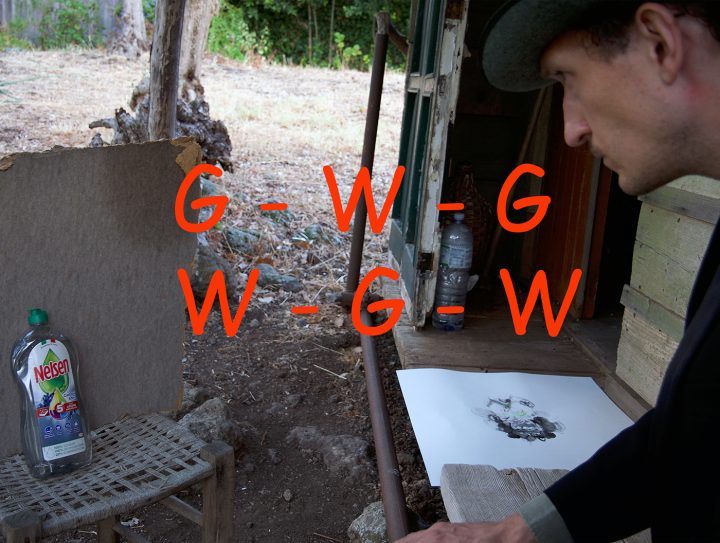Fabian Ginsberg
Psychedelic Semiotics
Exhibition March 8 – April 20, 2024

The A Posteriori
On Fabian Ginsberg’s Psychedelic Semiotics
In a well-known passage from Das Kapital, Karl Marx distinguishes between seeing things and perceiving commodities. When seeing things,
light is really transmitted from one thing, the external object, to another thing, the eye. It is a physical relation between physical things. As against this, the commodity-form, and the value-relation of the products of labour within which it appears, have absolutely no connection with the physical nature of the commodity and the material [dinglich] relations arising out of this. It is nothing but the definite social relation between men themselves which assumes here, for them, the fantastic form of a relation between things.
In light of this, what Fabian Ginsberg is doing with his Psychedelic Semiotics could be described as follows: the fantastic becomes physical again, the social is integrated into the visual, and the value-relation governs the human-thing relationship.
However, this is not a step backward into a prelapsarian, primitive state, but a great leap forward into a world full of cracks and false floors, into a fantastic experience that shares its alienated and estranged perception with psychedelia. For Marx, of course, the producer becomes a consumer and only recognizes their own product as a commodity fetish. For Ginsberg, on the other hand, the consumer becomes a producer who seeks to reproduce this fetish. And the artist reproduces the attempted reproduction. And we in turn attempt … regressus ad finitum.
This is demonstrated by Ginsberg’s paintings, in which things slip away from us as commodities, brand or market symbols, but at the same time draw us to them, even making us their equals. In order to comprehend them, we have to cognitively produce them ourselves first. But in producing them, they become distorted—and so do we. This is how the fantastic form of the Nivea tube establishes itself; although it has no use-value, it has an exchange-value with Matisse blue. To understand this, we should, as Jacques-Bénigne Bossuet recommended for anamorphic images in particular and the created (produced) world in general, change our perspective and use mirrors. In this case, we ourselves are the mirrors.
Mirrors are omnipresent in the trailer Paranoia. The speakers are mirrored, their languages are mirrored, the products in the script are mirrored in the commodities and the commodities in the monetary symbols, and last but not least, the camera is mirrored in its Fassbinder-like 360-degree tracking shots. The strange thing about the mirror is its there-not-there-ness. It has no apriority, only an eternal retrospection that acts like the present. This is what facilitates the a posteriori nature of Fabian Ginsberg’s art, which achieves the miracle of being vividly clear at a dizzying height of reflection.
Stefan Ripplinger, February 2024
Karl Marx, Capital: A Critique of Political Economy, vol. 1, trans. Ben Fowkes (London, 1976), p. 165. Jacques-Bénigne Bossuet, “Sermon sur la Providence” (1656), in Œuvres, ed. Abbé Velat (Paris, 1961), pp. 1039–57, here pp. 1045–46.
